Wild, Weird, and Wonderful | SLJ Spotlight
Rats and alligators and crows, oh my! These selections are odes to all of the fierce, creepy, and, in some cases, elusive beasts that ordinarily make even the toughest of us say "eek!" Yet these titles seek to inspire understanding of and awe for these often underappreciated creatures by highlighting their unique abilities, the science behind these traits, and the animals' importance to their ecosystem while still providing intense up-close action photos and fun facts. As a bonus, hand Downer's The Animal Mating Game to older readers and let the gasps and snickers begin!
DOWNER, Ann. The Animal Mating Game: The Wacky, Weird World of Sex in the Animal Kingdom. 104p. bibliog. diag. ebook available. further reading. glossary. index. notes. photos. websites. Twenty-First Century. Aug. 2016. lib. ed. $35.99. ISBN 9781467785716.
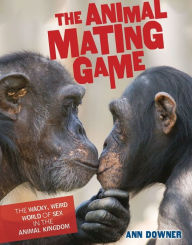 Gr 8 Up–The manner in which various animals mate and reproduce is varied, at times bizarre, and, in this exploration of the topic, downright fascinating. Downer begins by describing the mechanics of animal sex. Some reproduce via internal fertilization (the genitalia of male and female partners fit together, enabling the male’s sperm to fertilize the female’s eggs), and others reproduce via external fertilization (eggs are fertilized outside the female). Hermaphroditic animals have male and female sexual organs and are capable of mating with any member of their species. Subsequent chapters address the unique mating practices that accompany the act. Many animals perform complex dances to attract a mate; the satin bowerbird builds a special dance floor decorated with blue objects where he performs his mating dance. Some animals sing, yell, or croak to attract a mate, while others fight competitors to prove their worth. There are creatures who woo potential partners with gifts of food, while others produce pheromones that signal they are ready to mate. Some are equipped with unique genitalia; female marsupials have three vaginas and two uteruses (enabling them to have two different pregnancies at one time), and female hyenas have a clitoris so enlarged that it is called a pseudopenis. Mating, for some animals, is the grand finale—they mate and die. Sidebars and color photographs add visual interest to the already absorbing and accessible text. VERDICT Downer’s investigation of the myriad ways different species produce offspring is sure to enthrall researchers and browsers.
Gr 8 Up–The manner in which various animals mate and reproduce is varied, at times bizarre, and, in this exploration of the topic, downright fascinating. Downer begins by describing the mechanics of animal sex. Some reproduce via internal fertilization (the genitalia of male and female partners fit together, enabling the male’s sperm to fertilize the female’s eggs), and others reproduce via external fertilization (eggs are fertilized outside the female). Hermaphroditic animals have male and female sexual organs and are capable of mating with any member of their species. Subsequent chapters address the unique mating practices that accompany the act. Many animals perform complex dances to attract a mate; the satin bowerbird builds a special dance floor decorated with blue objects where he performs his mating dance. Some animals sing, yell, or croak to attract a mate, while others fight competitors to prove their worth. There are creatures who woo potential partners with gifts of food, while others produce pheromones that signal they are ready to mate. Some are equipped with unique genitalia; female marsupials have three vaginas and two uteruses (enabling them to have two different pregnancies at one time), and female hyenas have a clitoris so enlarged that it is called a pseudopenis. Mating, for some animals, is the grand finale—they mate and die. Sidebars and color photographs add visual interest to the already absorbing and accessible text. VERDICT Downer’s investigation of the myriad ways different species produce offspring is sure to enthrall researchers and browsers.
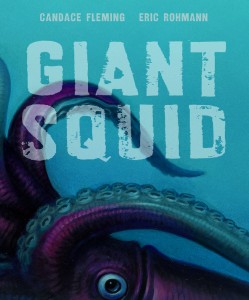 Gr 2-4–Through engrossing, informative verse, Fleming artfully introduces readers to a mysterious sea monster that glides through the deepest and darkest reaches of the ocean. Although some species of giant squid are as large as a bus, these animals are rarely spotted by people. Scientists have been able to gather clues and assemble a body of knowledge about the unusual cephalopod from pieces washed up on shore or found by fishermen. In a similar fashion, Fleming reveals characteristics of the squid piece by piece, beginning with a description of its 30-foot-long tentacles. She shares what little is known about the squid and raises many yet-to-be answered questions: Why does the squid change colors? Where does the female lay her eggs? As the narrative reaches a conclusion, the squid jets away from a predatory barracuda and disappears into a murky cloud of ink. Rohmann’s full-color paintings are eerily atmospheric. Bit by bit, each illustration focuses on a particular part of the sea creature until the entire squid is portrayed in a dramatic foldout spread. VERDICT Curious readers will be inspired by the engaging text and stunning illustrations to learn more about the giant squid. An essential purchase for science collections.
Gr 2-4–Through engrossing, informative verse, Fleming artfully introduces readers to a mysterious sea monster that glides through the deepest and darkest reaches of the ocean. Although some species of giant squid are as large as a bus, these animals are rarely spotted by people. Scientists have been able to gather clues and assemble a body of knowledge about the unusual cephalopod from pieces washed up on shore or found by fishermen. In a similar fashion, Fleming reveals characteristics of the squid piece by piece, beginning with a description of its 30-foot-long tentacles. She shares what little is known about the squid and raises many yet-to-be answered questions: Why does the squid change colors? Where does the female lay her eggs? As the narrative reaches a conclusion, the squid jets away from a predatory barracuda and disappears into a murky cloud of ink. Rohmann’s full-color paintings are eerily atmospheric. Bit by bit, each illustration focuses on a particular part of the sea creature until the entire squid is portrayed in a dramatic foldout spread. VERDICT Curious readers will be inspired by the engaging text and stunning illustrations to learn more about the giant squid. An essential purchase for science collections. MARKLE, Sandra. The Great Leopard Rescue: Saving the Amur Leopards. 48p. chron. ebook available. further reading. glossary. index. maps. notes. photos. websites. Millbrook. Aug. 2016. lib ed. $30.65. ISBN 9781467792479.
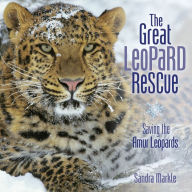 Gr 3-6–Amur leopards, native to eastern Russia and parts of northern China, are at risk of becoming extinct. Markle, a former science teacher, was inspired to write this work after learning about the dire state of these creatures. The narrative begins from the perspective of a young male Amur leopard on the hunt for his next meal. Markle segues into a brief history of these once well-established big cats and emphasizes the importance of their natural habitat, the taiga (a type of high-altitude forest), to their survival. Large-scale deforestation, made possible by advances in farming technology in the 1950s, began a chain of events (after the lumber industry cut down much of the taiga, the mining industry came in) that would push the Amur leopards to the brink of existence. The text then goes on to thoroughly cover the ways in which scientists, zookeepers, antipoaching teams, and other groups like the Amur Leopard and Tiger Alliance (ALTA) are working to protect and reestablish Amur leopard populations. In the end, the author returns to the young male from the beginning, only to reveal that the Phoenix Fund, part of ALTA, has been watching over him the whole time. Clear, beautiful photos will keep readers turning the pages, while maps, sidebars, and the main text keep them informed. VERDICT Libraries will definitely want to add this title for all of their animal-loving patrons, especially those with an interest in conservation efforts.
Gr 3-6–Amur leopards, native to eastern Russia and parts of northern China, are at risk of becoming extinct. Markle, a former science teacher, was inspired to write this work after learning about the dire state of these creatures. The narrative begins from the perspective of a young male Amur leopard on the hunt for his next meal. Markle segues into a brief history of these once well-established big cats and emphasizes the importance of their natural habitat, the taiga (a type of high-altitude forest), to their survival. Large-scale deforestation, made possible by advances in farming technology in the 1950s, began a chain of events (after the lumber industry cut down much of the taiga, the mining industry came in) that would push the Amur leopards to the brink of existence. The text then goes on to thoroughly cover the ways in which scientists, zookeepers, antipoaching teams, and other groups like the Amur Leopard and Tiger Alliance (ALTA) are working to protect and reestablish Amur leopard populations. In the end, the author returns to the young male from the beginning, only to reveal that the Phoenix Fund, part of ALTA, has been watching over him the whole time. Clear, beautiful photos will keep readers turning the pages, while maps, sidebars, and the main text keep them informed. VERDICT Libraries will definitely want to add this title for all of their animal-loving patrons, especially those with an interest in conservation efforts.
TOOR, Rachel. Misunderstood: Why the Humble Rat May Be Your Best Pet Ever. 256p. further reading. photos. Farrar. Jun. 2016. Tr $17.99. ISBN 9780374303082.
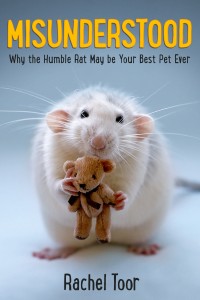 Gr 6 Up–Have you ever considered owning a pet rat? Would you believe that rats make great, low-maintenance pets? Toor aims to reverse negative attitudes toward rats by informing readers of their pleasant nature and many amazing abilities and providing some personal anecdotes about her own rat, Iris. Hesitant readers will immediately be drawn in by the first line of the introduction: “For three and a half years I was in love with someone the size of a hot dog bun.” Toor mixes humor with genuine affection as she details how she came to appreciate rats while also debunking some common myths students may be familiar with. For instance, she clarifies that rats alone did not cause the Black Plague; rather, it was the fleas that lived on them (which carried the disease in the form of a bacterial microbe) that were largely responsible. In addition, she briefly covers the concepts of evolution, genetics, and domestication to show how environment and circumstance can influence how a creature develops and acts. The true highlight of this work is the relationship between Toor and Iris during a challenging period in Toor’s life (her mother was diagnosed with cancer). Students will feel close to the loving and sweet-tempered Iris. However, tenderhearted readers should be warned that Toor’s mother and Iris both die. The author includes material on ratteries (rat breeders), different rat varieties (based on color and coat), and questions to consider before opting for a pet rat. VERDICT A delightful addition to any library or classroom’s creative nonfiction section.
Gr 6 Up–Have you ever considered owning a pet rat? Would you believe that rats make great, low-maintenance pets? Toor aims to reverse negative attitudes toward rats by informing readers of their pleasant nature and many amazing abilities and providing some personal anecdotes about her own rat, Iris. Hesitant readers will immediately be drawn in by the first line of the introduction: “For three and a half years I was in love with someone the size of a hot dog bun.” Toor mixes humor with genuine affection as she details how she came to appreciate rats while also debunking some common myths students may be familiar with. For instance, she clarifies that rats alone did not cause the Black Plague; rather, it was the fleas that lived on them (which carried the disease in the form of a bacterial microbe) that were largely responsible. In addition, she briefly covers the concepts of evolution, genetics, and domestication to show how environment and circumstance can influence how a creature develops and acts. The true highlight of this work is the relationship between Toor and Iris during a challenging period in Toor’s life (her mother was diagnosed with cancer). Students will feel close to the loving and sweet-tempered Iris. However, tenderhearted readers should be warned that Toor’s mother and Iris both die. The author includes material on ratteries (rat breeders), different rat varieties (based on color and coat), and questions to consider before opting for a pet rat. VERDICT A delightful addition to any library or classroom’s creative nonfiction section.
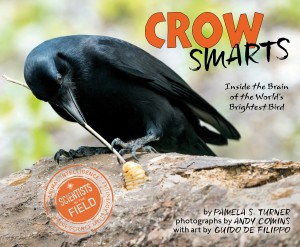 Gr 4-7–This title takes readers to New Caledonia, where, as Turner puts it, “the forests are lush and the crows are geniuses.” Comins’s photos supply ample evidence of both. Under the guidance of crow researcher Gavin Hunt, expeditions to the island’s wilds provide opportunities to watch the local species of crow display the astonishing ability not only to use found sticks to dig grubs from logs but also to make their own hooked tools from twigs or the jagged leaves of the pandanus—and to train a juvenile crow in the technique. Then later, under controlled conditions in a lab, captive crows (which are carefully returned to their home territories afterward) beat out groups of four- to seven-year-old children in performing feats of mental activity to get at an inaccessible treat. The author also surveys tool use by other wild animals, from chimps to crocodiles, and, with added art by de Filippo, compares the structures of crow and human brains. She closes with more anecdotes about corvid intelligence and leads to further information. VERDICT Required reading for anyone who believes that we are the only, or even the most, sapient species on the planet. Highly recommended for STEM and animal collections.
Gr 4-7–This title takes readers to New Caledonia, where, as Turner puts it, “the forests are lush and the crows are geniuses.” Comins’s photos supply ample evidence of both. Under the guidance of crow researcher Gavin Hunt, expeditions to the island’s wilds provide opportunities to watch the local species of crow display the astonishing ability not only to use found sticks to dig grubs from logs but also to make their own hooked tools from twigs or the jagged leaves of the pandanus—and to train a juvenile crow in the technique. Then later, under controlled conditions in a lab, captive crows (which are carefully returned to their home territories afterward) beat out groups of four- to seven-year-old children in performing feats of mental activity to get at an inaccessible treat. The author also surveys tool use by other wild animals, from chimps to crocodiles, and, with added art by de Filippo, compares the structures of crow and human brains. She closes with more anecdotes about corvid intelligence and leads to further information. VERDICT Required reading for anyone who believes that we are the only, or even the most, sapient species on the planet. Highly recommended for STEM and animal collections. YOLEN, Jane. The Alligator’s Smile: And Other Poems. photos by Jason Stemple. 32p. ebook available. further reading. glossary. websites. Millbrook. Aug. 2016. lib. ed. $19.99. ISBN 9781467755757.
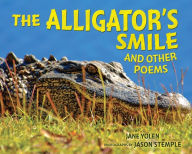 Gr 1-5–A fabulous merging of science and poetry, this latest addition from veteran author Yolen provides an up-close view of the American alligator. The poems vary in style, from haiku to limerick, while the photographs of real alligators in their habitats are enticing and chilling. Yolen knows how to create little moments of suspense; in the three-line poem “Seven Words About an Alligator,” the first two lines build a slow, steady pace (“Silently floating,/Silently gloating”), making the reversal and the accompanying sense of danger in the third and final line (“Not a log”) all the more spooky. Through these verses, readers will learn about alligator nests, teeth, diet, and hunting style, as well as how long these creatures live and how long they have existed (about 80 million years). Fact boxes on each spread expand on the subject of the poem. The lack of an explanation or guide to the poetic style used does not detract from the volume. VERDICT Beware: young readers with an interest in reptiles, science, or poetry are certain to snatch up this work. Recommended for most collections.
Gr 1-5–A fabulous merging of science and poetry, this latest addition from veteran author Yolen provides an up-close view of the American alligator. The poems vary in style, from haiku to limerick, while the photographs of real alligators in their habitats are enticing and chilling. Yolen knows how to create little moments of suspense; in the three-line poem “Seven Words About an Alligator,” the first two lines build a slow, steady pace (“Silently floating,/Silently gloating”), making the reversal and the accompanying sense of danger in the third and final line (“Not a log”) all the more spooky. Through these verses, readers will learn about alligator nests, teeth, diet, and hunting style, as well as how long these creatures live and how long they have existed (about 80 million years). Fact boxes on each spread expand on the subject of the poem. The lack of an explanation or guide to the poetic style used does not detract from the volume. VERDICT Beware: young readers with an interest in reptiles, science, or poetry are certain to snatch up this work. Recommended for most collections.
These reviews were published in School Library Journal’s August 2016 issue.
RELATED
The job outlook in 2030: Librarians will be in demand
The job outlook in 2030: Librarians will be in demand
ALREADY A SUBSCRIBER? LOG IN
We are currently offering this content for free. Sign up now to activate your personal profile, where you can save articles for future viewing






Add Comment :-
Be the first reader to comment.
Comment Policy:
Comment should not be empty !!!